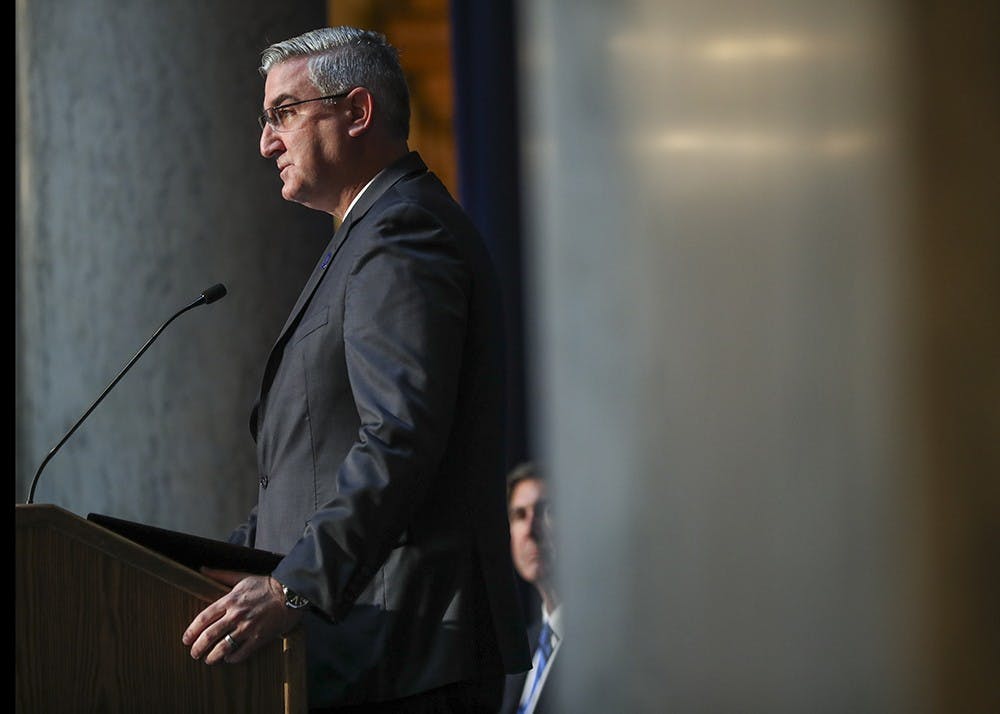The United States recorded a total of 981,246 cases of COVID-19 by the end of April. The country could have seen upwards of 35 million cases without shelter-in-place orders, public school closures, bans on large social gatherings or closures of entertainment-related businesses.
Gov. Eric Holcomb pushed Indiana’s reopening plans into Stage 5 on Sept. 26, and the state has experienced its three largest single-day case totals since then. Despite the ominous trend in new cases, Holcomb plans to keep Indiana fully open.
Holcomb’s refusal to roll back Stage 5 is reckless and will result in unnecessary deaths. Adamantly pushing forward plans to reopen the state sends a signal to Hoosiers that the virus is under control, which could not be farther from the truth.
When Holcomb instituted the stay-at-home order back in March, Indiana experienced a seven day average of 62 cases per day. Currently, the average is at 1,802 cases. Indiana has reported more than 150,000 cases of COVID-19, and 22% of these cases were reported after Indiana transitioned into the Stage 5 phase less than one month ago.
When Holcomb extended the stay-at-home order at the beginning of April, he emphasized the need for a behavioral change which required “us to be responsible and not send kids into a classroom, not send our workforce into nonessential jobs so that they become spreaders.”
“That's like pouring fuel onto a fire,” he added.
But during a press conference last week, the governor came equipped with a barrel of fuel.
“We can only control what we can control,” he said in defense of his efforts to push forward with Stage 5 despite the alarming trend in cases.
Face coverings and social distancing are mandatory under Indiana’s Stage 5 guidelines. However, limits on social gatherings and capacity restrictions for businesses are nonexistent.
Holcomb blamed the recent rise in cases on private events where precautions are often not adhered to and tighter restrictions would ultimately prove ineffective.
Limits on social gatherings and indoor capacity restrictions are not foolproof. The guidelines are inherently difficult to enforce. Nonetheless, they are effective at reducing the spread of COVID-19 and are absolutely necessary to reinforce the severity of our current health crisis. Citizens look to the state as an authoritative entity therefore it has a responsibility to set the tone surrounding public issues. The pandemic is no exception.
Simultaneously mandating face coverings and allowing businesses to fully open sends a mixed message. With in-person learning, students across the state now face enticing opportunities to loosen up and engage in the social interactions they were barred from earlier this year. Fully operational businesses enable poor decision-making. Now is the time to send a strong message to all Hoosiers because their lives depend on it.
Indiana is one of 42 states that either lifted restrictions entirely or are actively easing restrictions. Meanwhile cases of COVID-19 are increasing in 44 states.
Holcomb’s unwillingness to respond to the rise in cases now is illogical in light of his actions in late March. The seven day moving average in cases is now 29 times higher than it was when he enacted the stay-at-home order. Nearly one-fifth of COVID-19 cases from the past seven months occurred in the last three and a half weeks.
Indiana should immediately put a hold on its plan to reopen. If state officials fail to backtrack now, they risk a stay-at-home order as the second wave of COVID-19 intensifies. Holcomb expressed his willingness to impose another stay-at-home order if the data supports the measure. If the data does not already support such intervention, I am uncertain when we will reach that point. Health officials are concerned with the direction Indiana is headed.
The economic effects of an additional executive action of this magnitude would likely be far worse than tightening restrictions now. Indiana’s gross domestic product fell nearly 11% from Oct. 2019 to June 2020. April, the month when most of the stay-at-home orders were in full swing, was the month with the most job losses.
The worst of the pandemic is yet to come. But rest assured, Holcomb spoke of easing restrictions back in May because hospitals had the capacity to care for the critically ill. Perhaps there is a hospital bed available for you right now. But hurry in, they are selling fast.
Katelyn Balakir (she/her) is a junior studying policy analysis and world political systems. She is a member of Indiana Model United Nations.






